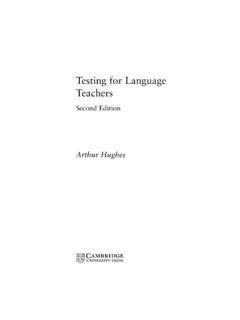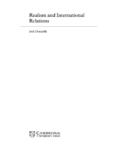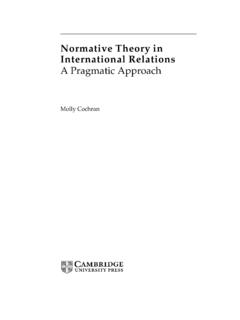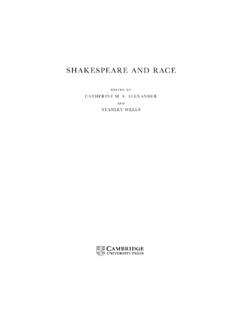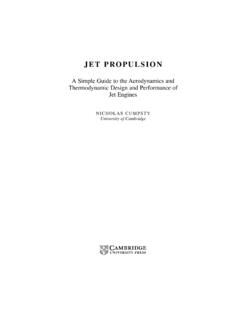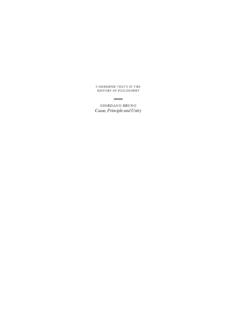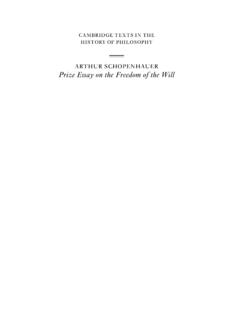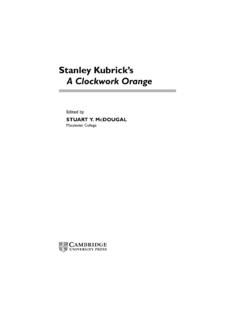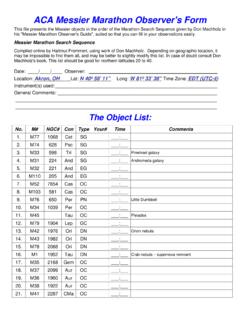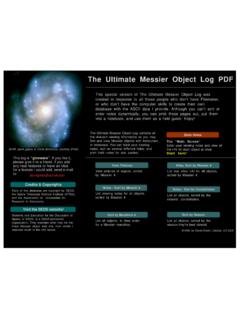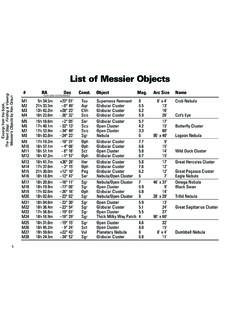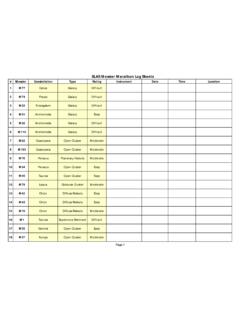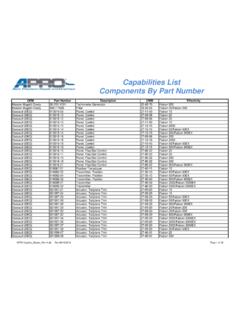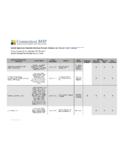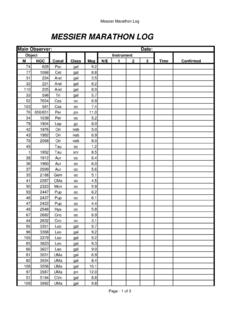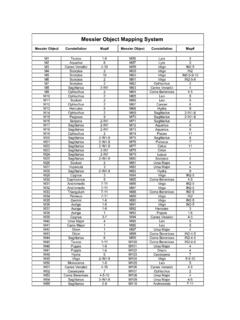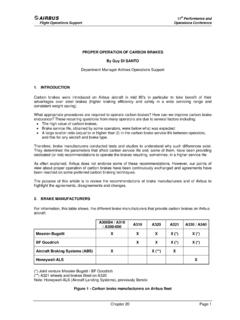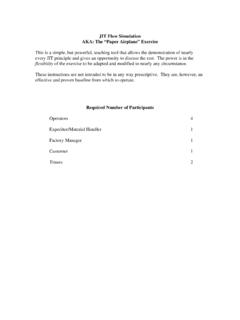Transcription of The Observing Guide to the Messier Marathon
1 The Observing Guide tothe Messier MarathonA Handbook and AtlasDon Machholzpublished by the press syndicate of the university of cambridgeThe Pitt Building, Trumpington Street, Cambridge, United Kingdomcambridge university pressThe Edinburgh Building, Cambridge CB2 2RU, UK40 West 20th Street, New York, NY 10011 4211, USA477 Williamstown Road, Port Melbourne, VIC 3207, AustraliaRuiz de Alarc n 13, 28014 Madrid, SpainDock House, The Waterfront, Cape Town 8001, South Don Machholz 2002 This book is in copyright. Subject to statutory exceptionand to the provisions of relevant collective licensing agreements,no reproduction of any part may take place withoutthe written permission of Cambridge University published 2002 Printed in the United Kingdom at the University Press, CambridgeTypefaceQuadraat 12/15 ptSystemQuarkXPress [se]A catalogue record for this book is available from the British LibraryLibrary of Congress Cataloging in Publication dataMachholz, Don, 1952 The Observing Guide to the Messier Marathon / Don bibliographical references and 0521 80386 11.
2 Astronomy Observers manuals. 2. Astronomy Charts, diagrams, Galaxies Charts, diagrams, etc. 4. Stars Clusters Charts, diagrams, Nebulae Charts, diagrams, etc. 6. Messier , Charles. Catalogue des n buleuses etamas d toiles. I. 2002522 dc21 2002071562 ISBN 0521 80386 1 hardbackContentsList of tablespageviiPrefaceixAcknowledgmentsxii Part 1 Handbook1 Charles Messier3 Notes to Chapter 1102 The Messier Catalogue11 Defining the nebulous objects15 The add-on Messier Objects21 Putting it all together22 Notes to Chapter 2273 The Messier Marathon29A short history of the Messier Marathon31 Factors a ecting the Messier Marathon35 Messier Marathons during other times of the year66 Getting your astronomy club involved72 Hints for running the Marathon75vNotes to Chapter 377 Messier Marathon logsheet784 Other Marathons79 Ideas for di erent Messier Marathons79 Caldwell Marathon83 Lacaille
3 Marathon84 Notes to Chapter 489 Appendix: The Greek alphabet90 Glossary91 Bibliography and further reading93 Part 2 AtlasAtlas index of Messier Objects99 The Messier Marathon Search Sequence Comets discovered by and credited to Charles Comets independently discovered by Charles Comets discovered during each five-year interval,1758 Charles Messier The Messier Proposed dates for the Messier Marathon , 2001 The number of Messier Objects visible from variouslatitudesfrom mid-February to Search sequence for GOTO telescopes65viiCharles MessierCharles Messier lived and worked during a pivotal point in visualastronomical history. He was one of the first comet hunters,discovering new comets over a span of four decades, and recordingnearly every observable comet during his comet hunting resulted in an extensive knowledge of thenight sky, enabling him to organize a catalog of galaxies, clustersand nebulae.
4 This list of heavenly wonders, known as the MessierCatalogue, has become one of the most popular lists of its kind. Itincludes many of the brightest and best-known objects in the nightsky. Yet the 110 marvels are few enough that even the beginningamateur astronomer of today can find them all, or nearly all, of themin one on June 26, 1730, in Lorraine, France, Charles was the tenthof twelve father died when he was eleven. Three yearslater, in early 1744, the young Charles observed the brilliant multi-tailed comet of 1744. A month after his eighteenth birthday, in July1748, he observed an annular solar eclipse from his home town. InOctober 1751 he went to Paris in search of a new life.
5 His skill inpenmanship and drafting landed him employment as a recordkeeper at a small observatory at the Hotel de Cluny. One of his firsttasks was copying maps of the Great Wall of China and of the City of31what was then called duties included surveying,making maps of the local area, recording sunspots and compilingmeteorological data. His employer, Joseph Nicholas Delisle, gaveMessier the position of Depot Clerk of the Navy .As time went on, Messier was trained to use various telescopes atthe observatory to obtain and record exact positions of heavenlybodies. His first documented observation was of the planetMercury s transit of the sun on May 6, 1753. By 1757 he wassearching for a comet famously predicted to return by EdmondHalley.
6 His search was based on Delisle s calculations of the comet slikely position, and was carried out with a meter focal lengthreflector. The diameter of the telescope s mirror was , but, being made of metal, it reflected little light and gavepoor was during this period, in 1758, that Messier conceived of hisnow famous celestial catalog. While tracking yet another comet ofthat year, Messier noted a strong resemblance between this cometand a nearby nebula. This object, now known as the Crab Nebula,had been discovered twenty-seven years earlier by John Bevis. Itoccurred to Messier that a catalog giving positions and descriptionsof such comet look-alikes would help prevent confusing them withthe real , Messier continued his quest for Halley s Comet, notknowing at the time that Delisle s calculations were flawed and weremisdirecting his search.
7 On Christmas night, 1758, an amateurastronomer in Germany, Johann Palitzch, was the first to findHalley s Comet. Messier would find it nearly four weeks later, onJanuary 21, 1759. News of Messier s find was withheld by Delisleuntil April 1, long after the comet faded into the evening sky and re-appeared in the morning sky. It is not known why Delisle failed topublish Messier s observation in a timely manner, but the practicalresult was general skepticism of Messier s claim to have found thecomet ten weeks earlier. Messier later wrote that the delay in theannouncement was one of the biggest disappointments in his Palitzch found no more comets, but Messier continuedsearching until, by 1801, he had discovered or co-discovered twentycomets.
8 These comet discoveries brought Messier fame anddistinction, along with allowing him the pleasure of viewing thenight sky through a used more than a dozen telescopes during his observingPart 1 Handbook4 Figure Messier , 1771. Courtesy of Dr Owen To search for Halley s Comet in 1757 9 he used a reflectorwith a mirror of about meter diameter. He had access to otherinstruments in the observatory, including a refractor with a lens ofabout 10 cm, a focal length of meter, and a magnification of120 . This refractor seemed to be his favorite instrument, and wasused for much of his lists the thirteen comets that were discovered first byCharles , Comet Lexell, was discovered by Messier , butcarries the name of the orbit calculator, Anders Lexell.
9 Thisparticular comet had a short orbital period until it passed too closeto Jupiter in 1779. This changed the orbit, and the comet is now includes seven additional comets found by Messiershortly after other discoverers found presentregulations, a comet can carry the names of as many as threediscoverers if their verified independent discovery is made shortlyafter the original find. According to these rules it seems unlikely thatany of these comets would also bear Messier s name. In four cases51 Charles MessierTable Comets discovered by and credited to Charles comet designation and comet name are followed by the discovery date, withthe month followed by the day and year.
10 The position is in 2000 coordinates andindicates the position of the comet at discovery. The magnitude is the brightnessof the comet when found. Elongation is the number of degrees the comet wasfrom the sun as seen from the Earth. Next we see if the comet was found in themorning or evening sky. The instrument indicated is either a telescope (T) or theunaided eye (U).Comet Comet nameDisc. date RA Decl. El. Mag. Sky B1 Messier01/26/1760 10:56 133 M TC/1763 S1 Messier09/29/1763 16:28 59 E TC/1764 A1 Messier01/04/1764 15:47 91 M UC/1766 E1 Messier03/09/1766 1:23 34 E TC/1769 P1 Messier08/09/1769 2:27 101 M TD/1770 L1 Lexell06/15/1770 18:25 169 E TC/1771 G1 Messier04/02/1771 2:48 31 E UC/1773 T1 Messier10/13/1773 10:27 47 M TC/1780 U2 Messier10/27/1780 11:49 46 M TC/1785 A1 Messier Mechain 01/08/1785 2:20 103 E TC/1788 W1 Messier11/26/1788 11:19 96 M TC/1793 S2 Messier09/28/1793 16:21 60 E TC/1798 G1 Messier04/13/1798 3:30 31 E Ttoo much time had elapsed.

